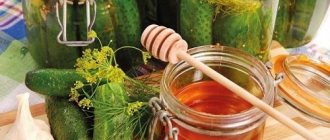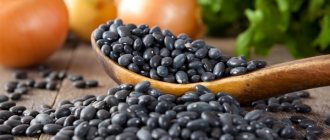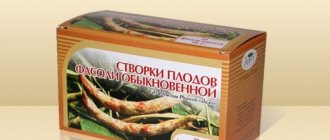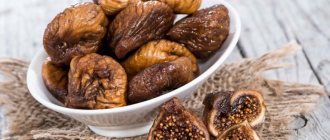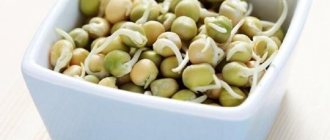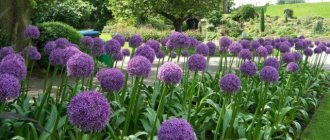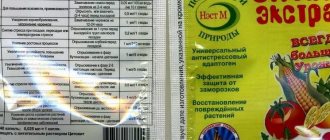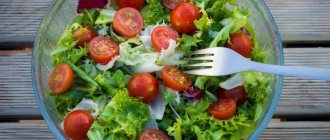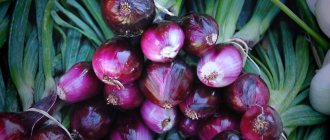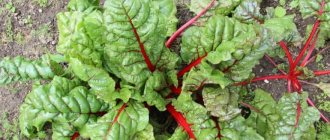How to sprout beans
Before describing germination methods, it is worth noting that not all varieties of legumes are suitable for this. For example, red or white beans should absolutely not be sprouted, as this can lead to severe poisoning. The best varieties for raw consumption are the angular Azuki bean and the Indian Mung bean. In fact, these are the only types of legumes that can be sprouted. The sprouts of these varieties are spicy and sweetish in taste.
To germinate beans, take any container that is on the farm. It could be a plate, a glass, a bowl. In addition, you can buy a seed germinator at a specialty store. This is a convenient piece of equipment, but by no means necessary.
The only thing that raw foodists recommend purchasing for sprouting beans at home is a sprouter - a universal system designed not only for automatic irrigation of sprouts, but also for maintaining optimal humidity and temperature conditions. With such equipment, sprouting beans requires virtually no effort. You only need to change the water once a day.
If a sprouter is not available, you can sprout the beans by hand. In order for the sprouts to have a pleasant taste and fresh aroma, it is necessary to build the correct structure. To do this you need:
- Take two containers - one with a deep bottom, the other with holes, which will allow you to remove excess water.
- A sieve is suitable as a second container. Its bottom is lined with gauze, placed in a deep container and filled with Indian bean seeds.
- Then the mung bean is filled with water and left for a couple of hours in a dark and warm place.
- Water the beans every 3 hours. After 10 hours, the beans are washed and excess water is drained.
- The washed mung beans are left to germinate. It is important that this process is not accompanied by exposure to sunlight. Sprout beans only in a dark place.
A day later the first shoots appear. They can be eaten immediately, although some raw foodists prefer to leave the beans for a few more days and only then eat them.
Note! Sprouts that germinate for more than a day must be washed and dried. Otherwise, they will lose all useful components.
See also
Description of the Lima bean variety, features of cultivation and careRead
Immediately before using the sprouts, they are peeled and washed again. They eat only fresh sprouts. This product is not recommended to be refrigerated or frozen.
Recipes
Gave
Ingredients:
- mung bean – 200 g;
- butter – 50 g;
- grated fresh ginger – 5 g;
- cinnamon – 1 stick;
- cumin – 7.5 g;
- water – 1.9 liters;
- garlic – 2 cloves;
- red pepper – 2 pods;
- bay leaf – 2 pieces;
- turmeric – 5 g;
- vegetables – 275 g;
- salt.
Cooking principle:
- Pour water into a saucepan and bring to a boil. Add bay leaf and cinnamon.
- Add mung bean to boiling water and cook for 20 minutes over low heat.
- Peel the vegetables, chop finely, mix with butter and turmeric. Place the resulting mass in the mash. Cook until the beans are soft. If the consistency of the soup is too thick, add a little water.
- Heat a frying pan and fry dried red pepper and cumin seeds in oil. When they darken, add garlic and grated ginger.
- Pour the seasonings into the dal and cook for 5 minutes.
- Before serving, add sour cream to the dish.
Mashkhurda
Ingredients:
- round grain rice – 200 g;
- lamb fat – 100 g;
- carrots – 2 pieces;
- tomatoes - 3 pieces;
- mung bean – 200 g;
- whole barberry – 15 g;
- cilantro – 4 sprigs;
- boiled water – 3 l;
- beef bones – 400 g;
- lamb pulp – 400 g;
- vegetable oil – 60 ml;
- onions – 2 heads;
- mixture of red hot pepper, cumin seeds and coriander – 15 g;
- salt.
Cooking principle:
- Cut fat and meat into small pieces.
- Peel the onions and carrots and cut into strips.
- Scald the tomatoes with boiling water, remove the skin and chop.
- Rinse the mung bean and rice under water and place in a sieve. Do not mix grains with each other.
- Heat the oil in a cauldron, fry the meat and bones over high heat until a brown crust appears.
- Add the fat (it should become slightly transparent), then the onions (until a yellowish tint appears), and the tomatoes. Add barberry and spice mixture. Cook for 5 minutes.
- Place the carrots in a cauldron, add mung bean, pour in water. Bring the contents to a boil, turn down the heat, and cook under a closed lid for at least half an hour. Cook the dish until the beans burst.
- Add bay leaf and rice to the contents. Cook for another 25 minutes, add salt. After cooking, leave the dish on the stove for 20 minutes.
- Serve mashkhurd with katyk or thick yogurt. Garnish with cilantro and basil.
It is interesting that in Uzbek stir-fry soups, spices are added at the stewing stage. They are often introduced after adding vegetables (in particular tomatoes), when they actively release juice.
What beans contain - chemical composition, vitamins and microelements
Sprouted beans are low in calories. There are only 30 kcal per 100 grams of product. The composition of sprouted beans includes:
- fats;
- proteins;
- carbohydrates.
100 grams of product contains the daily dose of these ingredients.
Also, sprouted beans contain large quantities of B vitamins and vitamin C. The mineral components present in the composition are:
- magnesium;
- calcium;
- phosphorus;
- iron;
- zinc;
- sodium;
- copper;
- manganese and many other health-promoting microelements.
The composition of the product is so universal that the body will receive all the substances necessary for life, even if a person eats only sprouts.
Indications for use
Traditional healers use remedies that contain bean pods to treat the following pathologies:
- colds and ARVI;
- cystitis;
- diabetes;
- hypertension and other diseases of the cardiovascular system;
- arthritis;
- stomach ulcer;
- gastritis with low acidity;
- skin pathologies (eczema);
- obesity;
- liver diseases;
- pyelonephritis;
- pancreatitis;
- cataract;
- asthma;
- migraine;
- nervous disorders.
Important!
To avoid the development of an allergic reaction, it is necessary to conduct a provocative test to check whether the patient has an individual intolerance to the product.
To carry out the procedure, a few drops of the medicine are applied to the skin of the back of the wrist. If after 20-30 minutes. If the patient experiences redness, rash, itching or burning in this area, then the use of the product for medicinal purposes is strictly prohibited.
Where is it used?
Bean sprouts are widely used in cooking. Most often they are added to fresh vegetable salads. It is worth noting that it has now become fashionable to prepare dishes that use sprouted beans. This is primarily due to the fact that more and more people prefer a healthy lifestyle.
Many will be surprised, but sprouted beans are also used in various baked goods. They make delicious sauces and first courses. The nutritional value of the product allows it to be used not only as one of the ingredients for a dish, but also eaten as a side dish for meat or fish.
Sprouts are also popular in folk medicine. They are used with particular enthusiasm in Asian countries. Sprouts less than 3 cm in length are consumed for the following conditions:
- obesity;
- hypertension;
- decreased immunity;
- atherosclerosis;
- heart diseases;
- diabetes.
In addition, sprouts are known for their anti-aging and anti-cancer effects. Regular consumption of sprouted beans will prolong youth and reduce the likelihood of cancer.
Nowadays, whole complexes of therapeutic nutrition are very popular. Special diets involve combining sprouted beans with buckwheat, wheat, oat sprouts, berries and medicinal herbal decoctions.
Before use, the sprouts are carefully sorted. Rotten and spoiled parts must be thrown away. Only juicy and crunchy parts of plants are eaten.
Beneficial features
Sprouted beans contain more beneficial microelements than regular beans. They are very nutritious and at the same time dietary. That is why this product is often called “live food”. In order to clearly understand the beneficial properties of sprouts, let’s consider what benefits they bring to the body:
- normalize the functioning of the nervous system (produce a calming effect on the body);
- replenish the lack of vitamins, as a result of which the aging process in the body slows down;
- cleanse the intestines of waste and toxins;
- improve heart function;
- have an antimicrobial effect, which significantly reduces the likelihood of colds;
- normalize metabolism.
See also
How to properly store beans at home to prevent bugs from infesting themRead
Another benefit of bean sprouts is that they are low in calories. Thus, they are included in the diet when losing weight. These beans are known for their diuretic and antimicrobial effects. Sometimes it can replace pharmaceutical drugs.
Sprouted beans have a unique ability to reduce blood sugar levels. Therefore, it is strongly recommended for use by patients with diabetes.
Collection and preparation of medicinal raw materials. Drying, freezing, storage
Bean skins are very popular due to the minimal number of contraindications and a lot of positive effects for the body. The harvesting process is carried out at the stage of ripening of bean fruits. It consists of cutting off the aerial part and clearing the pods of fruit. The grains are sent to the kitchen for culinary purposes, and the leaves are dried in a natural environment or in special drying equipment.
As needed, the pods are crushed and packaged in compact packages. It is better to keep the dried product on racks in ventilated buildings, pouring them into fabric bags or paper packaging.
Sprouted beans - benefits and harms
Since ancient times, sprouts have been considered the richest food. These plants are rich in enzymes; their regular use improves the functioning of almost all organs and systems. But the usefulness of sprouted mung bean does not end there. It is used for weight loss and rejuvenation. Women who eat legume sprouts look much younger than their age.
Not only the condition of the skin improves, but also hair, nails, and teeth.
If you compare regular beans with sprouted beans, the latter contains three times more vitamin E and five times more vitamins B and C. About 50 grams of sprouts replaces six glasses of natural orange juice.
Sprouted beans can be combined with all foods. In this regard, it has no restrictions. The parallel consumption of berries, vegetables, and fruits is especially useful.
It is extremely beneficial to combine bean sprouts with wheat and oat sprouts. In addition, legume sprouts are used externally for lotions and compresses. This allows you to remove puffiness and swelling from the affected area. The sprouts are also used for rheumatism, arthritis, and gout. The product is added to skin care products. Rejuvenating face masks are especially popular. Thus, sprouted beans have the following effects:
- antibacterial;
- wound healing;
- anti-inflammatory;
- tonic;
- rejuvenating;
- anti-cancer.
But no matter how useful the product is, it is worth observing moderation. Its consumption in large quantities causes flatulence, decreased blood pressure, diarrhea and colic.
Application in cosmetology
Products based on bean leaves are perfect for caring for tired or aging skin. Husk extract is found in many cosmetic anti-age products, because it stimulates skin regeneration and has a lifting effect.
The products are also useful for skin prone to inflammation and rashes, since the beans and their shells have an antimicrobial effect. Cosmetics based on beans or shutters are easy to make at home.
Gentle scrub
For gentle cleansing and exfoliation, a scrub with the addition of bean flour is suitable.
Preparation: add 1 tsp to any natural scrub, for example coffee. ground or crushed bean leaves into flour.
Application: apply to face for 5-10 minutes, massage gently, rinse with warm water, apply nourishing cream. Frequency varies depending on age and skin type from twice a week to once every 3-4 weeks.
Reference. It is useful to add bean flour to face masks.
Contraindications
It is not recommended to consume sprouted beans for people with individual intolerance to the components of their composition. Caution is also necessary for chronic gastrointestinal diseases in the acute stage.
Since there is a possibility of sprout intolerance, caution should be exercised when first consuming. Initially, a small amount of sprouts is added to the food, after which the body’s reaction is observed. If an allergic reaction occurs, use should be stopped. If there are no negative reactions, the number of sprouts added to food is subsequently increased. But you shouldn’t abuse it, just like other products.
The other side of the issue
Despite the fact that beans have many beneficial qualities, they are still not an ideal food product. This is especially true for those who are accustomed to frying food in a frying pan with an abundance of low-grade sunflower oil. Such unreasonably high fat content negates the above benefits, if at all it does no harm due to possible carcinogens in cheap oil filling.
Elderly people who suffer from digestive tract problems are also at risk. Due to the high dose of fiber, they risk becoming patients in the gastroenterology department.
Among the main contraindications for consuming this type of beans are:
- increased acidity;
- gastritis;
- colitis;
- ulcers of the stomach and duodenum;
- gout;
- cholecystitis.
But gourmets don’t have to worry about side effects, since the risks are reduced to almost zero. The only possible consequence is excessive gas formation. To be on the safe side, experts recommend boiling the product and then draining the first water.
The cooked beans can be cut into large pieces, add diced boiled eggs and cherry tomatoes. Makes a great light snack for weight watchers.
In the old days, and even today, many herbalists used the juice of legumes to relieve the symptoms of bursitis. This chronic disease most often affects men 35 years of age and older. Patients suffer from severe pain in the joints and tendons, which leads to difficulty moving and redness of the skin areas under which the inflammatory process occurs.
Followers of traditional medicine claim that by drinking fresh bean juice every day and supplementing the weekly diet with dishes containing this healthy product, patients can alleviate their current condition. However, there is one pitfall here.
Doctors strongly advise that before starting any experiments with juice, seeds, leaves and other bean components, consult a doctor. Such forethought will eliminate the chance of acquiring ailments from the list of contraindications above.
